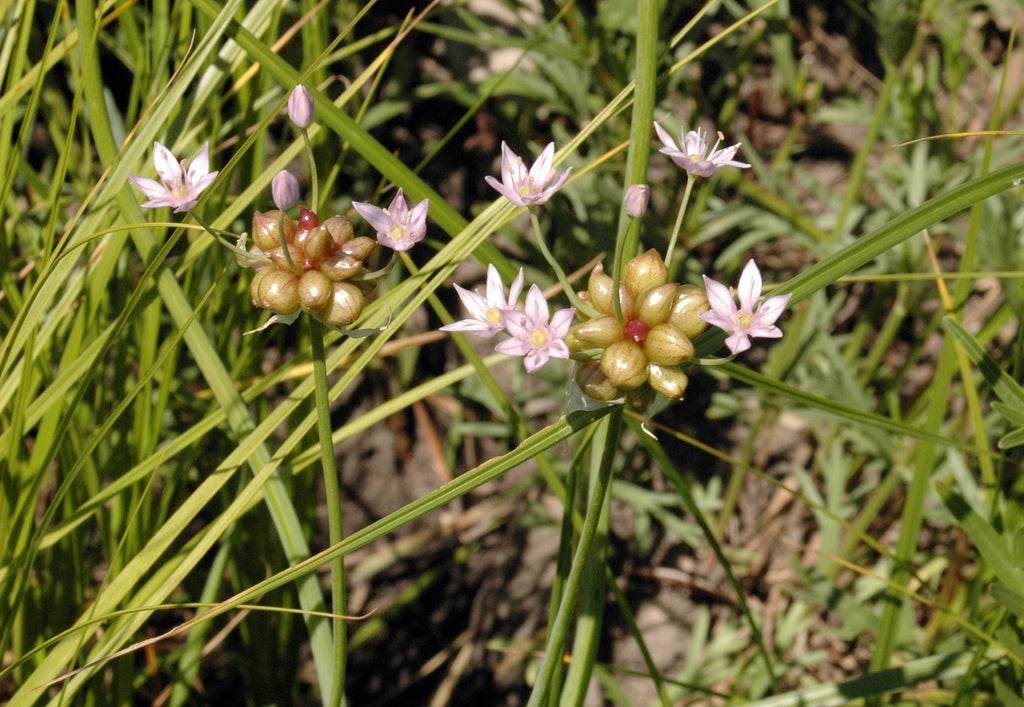Foraging For Edible Wild Onions: Can You Eat Meadow Garlic Weeds


In recent years, the concept of foraging for food has seen a surge in popularity among younger generations choosing to live more natural lifestyles. Whether foragers are looking to save money, or perhaps wish to fulfill a need for a more sustainable kitchen, there is no doubt that venturing out into the wilderness (or your own backyard) can be quite exciting. In many places, wild edibles are all around us. For most, learning how to accurately identify these wild foods greatly changes the way in which they perceive nature. One commonly foraged plant, meadow garlic, may be hiding in plain sight in the front lawn right now. Can you eat meadow garlic weeds? Let’s find out.
About Meadow Garlic Plants
Meadow garlic (Allium canadense), also referred to as wild onion, is a common weedy plant found throughout the Midwest and eastern United States. Forming loose mounds of leaves that somewhat resemble grass, the foliage of these plants is very similar to that of other members of the Allium family which are cultivated in vegetable gardens (such as onions and chives). Perennial in nature, plants first become noticeable in the spring and, left to their own devices, go on to produce flowers in the summer, though many people don’t notice them since they’re often treated as weeds and removed before having a chance to bloom.
Is Wild Garlic Edible?
Found along roadsides, in meadows, and even in ill-managed lawns, these edible wild onions are one of the most commonly found foraged plants. One major key to the identification of this plant is a very noticeable, pungent onion or garlic smell when disturbed. This characteristic is especially important, as many potentially toxic “lookalikes” do exist – such as the death camas, which is extremely toxic to humans. Both the leaves and the bulbs of meadow garlic plants can be used, most often in the springtime. Make certain only to harvest from locations which have not been treated with chemicals. Additionally, be sure to rinse the plants thoroughly. Common uses include its addition in soup recipes and meat-based dishes. Though small quantities of the plant are considered safe to eat, it does contain sulfides. When eaten in larger quantities, these edible wild onions may cause symptoms such as nausea, vomiting, and diarrhea. As with any wild foraged plant, thoughtful research can help make the decision whether a plant is or is not safe to eat. Location specific edible field guides are readily available online. Many local agriculture extensions also offer free foraging classes. When foraging, safety should always be of the highest priority. If there is any doubt whether or not a plant is safe to consume, it best not to do so. Disclaimer: The contents of this article is for educational and gardening purposes only. Before using or ingesting ANY herb or plant for medicinal purposes or otherwise, please consult a physician, medical herbalist or other suitable professional for advice.
Gardening tips, videos, info and more delivered right to your inbox!
Sign up for the Gardening Know How newsletter today and receive a free copy of our e-book "How to Grow Delicious Tomatoes".

Tonya Barnett has been gardening for 13 years. Flowers are her passion. She has transformed her backyard into a cut flower garden, which she regularly chronicles on her YouTube channel http://www.youtube.com/@tonyawiththeflowers.
-
 5 Tough Urban Trees That Thrive In Cities – Top Picks For Urban & Suburban Landscapes
5 Tough Urban Trees That Thrive In Cities – Top Picks For Urban & Suburban LandscapesExplore the best urban trees that will add value to even the most challenging of landscapes. Get growing with these ideas and enjoy all the benefits of trees.
By Teo Spengler
-
 7 New & Improved Cultivars Of Old-Fashioned Plants – These Aren’t Your Grandma’s Plants!
7 New & Improved Cultivars Of Old-Fashioned Plants – These Aren’t Your Grandma’s Plants!Old is new again! These old-fashioned plants have new cultivars that are sure to thrive in your garden and bring the charm factor. Neighbors will be envious!
By Mary Ellen Ellis